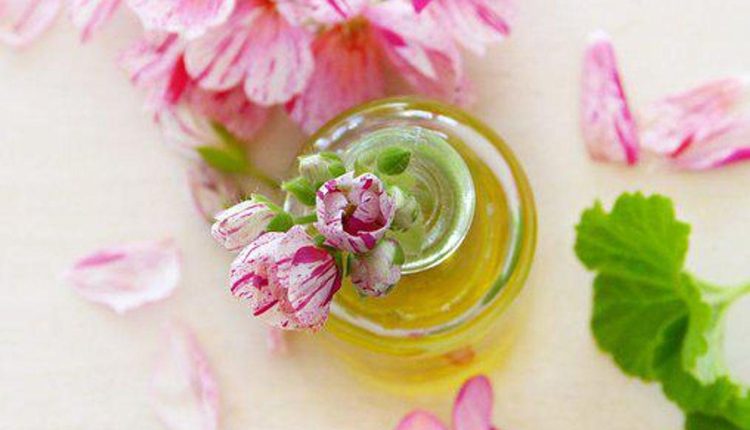Learning to make Your Own Essential Oil Blends intended for Skin Care
As a Certified Aromatherapist who once owned some sort of wellness spa, I regularly made customized skin care mixes for my clients. Like a Certified Aromatherapist without a health care spa anymore, well, I just give free advice to people who want to make their own skincare blends at home. Below are the tips for creating your efficient blends.
1 . First, de-prioritize smelling good. In general, important oils smell wonderful, however, I just want to make clear that whenever making a blend for skincare, the emphasis is mainly on effectiveness and only secondarily on how it smells. A few of the oils I like best for pores and skin don’t necessarily win any kind of Fragrance-of-the-Year awards. But avoid worry – you’re not likely to stink or anything.
second. Figure out your skin concerns. A few examples of concerns are greasy, acne-prone, sluggish, sensitive, damaged capillaries, aging, etc.
three. Choose essential oils which address your skin concerns. For those who have oily skin, you’ll want to select astringent essential oils (astringent means toning and toning of the tissues to decrease discharge). Now, a precaution: numerous Citrus oils are fierce, but you don’t want all of them on your face because they may cause phototoxicity (i. e., Bergamot – Citrus bergamia — and Lemon – Citrus fruit lemon). Examples of astringent important oils that work well in skincare are Cedarwood (Cedrus atlantica), Clary Sage (Salvia sclarea), and Juniper Berry (Juniperus communis), and Yarrow (Achillea millefolium).
If you have acne-prone skin, you could choose anti-bacterial or anti-microbial essential oils. Another safety measure here: some essential natural oils that are highly anti-bacterial may also be skin irritants (examples tend to be Cinnamon – Cinnamomum zeylanicum, Clove – Syzygium aromaticum, and Thyme – Thymus vulgaris). I like Tea Woods (Melaleuca alternifolia), Spike Violescent (Lavandula latifolia), Petitgrain (Citrus aurantium var. Amara), as well as Niaouli (also called MQV, an abbreviation of the Latin name, Melaleuca quinquenervia) for acne blends.
For those who have hormonal breakouts, then you’ll like hormone-balancing essential oils to assist manage cyclically-related pimples. I love Rose (Rosa damascena) with this, but Rose oil is very expensive (up to $500/ounce), so you can use Geranium (Pelargonium graveolens) and Ylang ylang (Cananga odorata) instead if you need to be able to feed your kids.
Should your skin needs rejuvenation or possibly a boost, you’ll want a cell phone to proliferate essential oil that helps bring about healing and cell proceeds. Immortelle (Helichrysum Angustifolia) (also called Everlasting) is remarkable for this purpose – as data, it heals up craters and scars very quickly. Violescent (Lavandula officinalis or Angustifolia) is another good cell proliferant and astringent, so it could serve double-duty in a skin area blend.
If you have sensitive skin areas or broken capillaries, it’s good to choose anti-inflammatory or vasoconstrictor (constricts blood vessels) vital oils to help soothe along with calm inflamed skin. Typically the Chamomiles (both Roman rapid Anthemis nobilis – along with German – Matricaria recutita) is probably the best anti-inflammatory vital oils around. You’ll see (if you’re an ingredient fan like me) that they are contained in almost every bottle of organic/natural facial lotion or moisturizer.
The Chamomiles are also beneficial to broken capillaries. Another good vasoconstricting oil we use a good deal is Cypress (Cupressus sempervirens), which is in a lot of typically the varicose veins and dimply skin body blends you’ll see out there.
For aging skin, I adore Carrot Seed (Daucus carrot) essential oil (if you found, Carrot Seed was likewise prominent in the ingredients on the links to the facial lotions I provided earlier). Carrot Seed has precursors for you to Vitamin A, and is strongly recommended by Dr . Kurt Schnaubelt, Ph.D., in his book, “Advanced Aromatherapy: The Science of Petrol Therapy” for aging skin area that is dull, pallid, along with lifeless.
4. Pick your own personal carrier oil. The base olive oil that you use is also very significant. For oilier skins, I enjoy using a lighter base of olive oil, such as Grapeseed (Vitis vinifera) oil. For drier templates, I like to use heavier foundation oil, such as Avocado (Persea Americana) oil. For regular skins, I like to use Jojoba (Simmondsia Chinensis) oil, which is the closest to the natural oils on the surface of the skin. Another facial skin care base essential oil is Peach Nut (Prunus persica) oil, but I could never find this, therefore I use Apricot Kernel (Prunus armeniaca) oil instead.
five. Formulate your blend. Things I would do is choose 4 essential oils which address your concerns after which use them in an equal proportion. You want to do roughly 20 in order to 24 drops of oil per 1 ounce associated with a base oil, so you’ll certainly be using 5-6 drops of every essential oil.
Let’s say you have each acne and hormonal outbreaks, and oily skin, with some awareness. A good blend for you will be:
* 6 drops of Geranium (for hormonal breakouts)
2. 6 drops Tea Woods (for breakouts in general)
* 6 drops of German-born Chamomile (for sensitivity)
2. 6 drops Clary Sage (as an astringent)
2. In 1 ounce associated with Grapeseed or Evening Primrose oil (the latter will work for hormonal imbalances)
Or, parenthetically you are concerned about aging, damaged capillaries, and dryness. A good blend for you can be:
* 6 drops of Carrot Seed (for aging)
4. 6 drops of German Chamomile (for broken capillaries)
4. 6 drops of Immortelle (for cell renewal)


